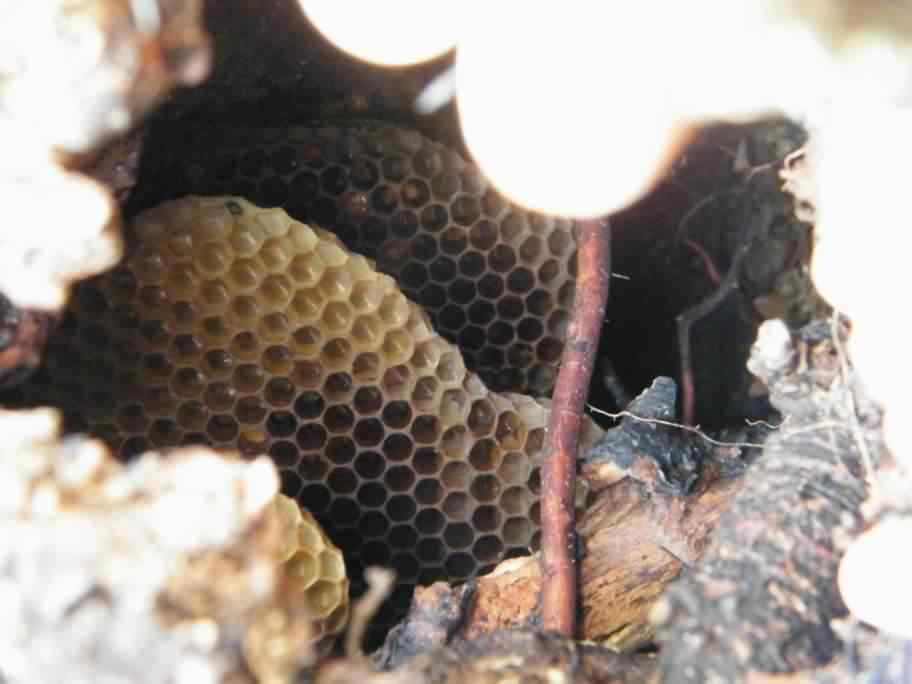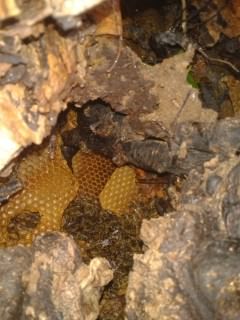
Photo ©2012–
Click for a larger image
More photos
Photo ©2012–
Click for a larger image
European Honey Bee - Apis mellifera
Family - Apidae
Also known as - the Western Honey Bee
Occurring in the wild as well as being kept in hives for their honey, the Honey Bee has been introduced to nearly all parts of the world, they are native to Europe, Asia, and Africa but are differentiated into geographic races with currently 28 recognized subspecies based on these geographic variations. A familiar insect with black and orange–yellow banded body growing to about 12mm (0.5in) long, it lives as a colony of several thousands of individuals, each with a defined role in the community which may last for many years. Bees produce honey by collecting nectar from plants and flowers, it is a clear liquid of around 75% water with complex sugars, storing the nectar in a second stomach and return to the hive. Worker bees digest the raw nectar breaking up the complex sugars into simpler ones using enzymes. Raw honey is then deposited in empty honeycomb cells to dry, reducing the water content to less than 20%. Once dried, the cells of the honeycomb are sealed (capped) with wax to preserve the honey.
In temperate zones during cold or winter weather honey bees survive as a colony with the bees living on stored reserves of food and huddling together in a large mass to maintain warmth. The queen begins egg laying in mid to late winter, to prepare for spring. The queen is the only fertile female, and lays all the eggs in the colony. The queen rarely leaves the hive except for brief mating periods or if she leaves in later life with a swarm to establish a new colony. Bees make a nest of wood pulp in hollow trees or other suitable crevices, comprised of hexagonally tubular chambers in which the young pupae are housed along with a food store of honey. They will sting if provoked, an act that can result in the death of the bee as the sting mechanism with its own musculature and ganglion allowing it to keep delivering venom once detached, comes away from the insect. Occasionally a Bee may be able to pull the sting free and either fly off unharmed, or sting again.
The genus name Apis is Latin for "bee", and mellifera comes from Latin melli- "honey" and ferre "to bear" - hence the scientific name means "honey–bearing bee". Coined in 1758 by Carolus Linnaeus who, realizing that the bees do not bear honey, but nectar, tried later to correct it to Apis mellifica ("honey–making bee") in a subsequent publication. However, according to the rules of synonymy in zoological nomenclature, the older name has precedence.
In recent years media attention has focused on a decline in European honey bee colonies through a condition called "Colony Collapse Disorder", a condition in which worker bees from a beehive or bee colony abruptly disappear. Currently, intensive studies are trying to find the cause of this worrying condition as Bees pollinate many of our food plants.
 |
Larger video |  |
All images taken in Brickfields Park, photos ©2012– Click any photo for a larger image | ||
Site design ©1999– Brickfields Country Park - Privacy -